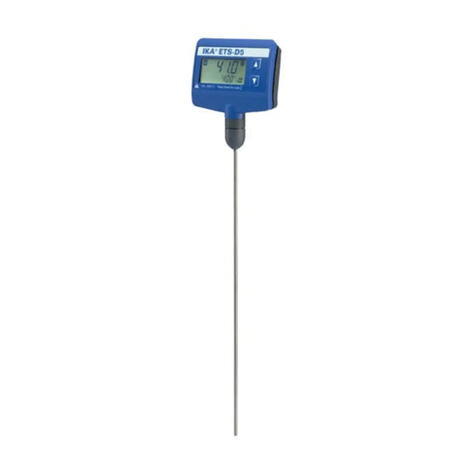
5
General information:
• Read the operating instructions completely before
starting up and follow the safety instructions.
• Keep the operating instructions in a place where it can be
accessed by everyone.
• Ensure that only trained staff work with the device.
• Follow the safety instructions, guidelines, occupational
health, safety and accident prevention regulations.
• Set up the device in a spacious area on an even, stable,
clean, non-slip, dry and fireproof surface.
• The device has been constructed to the requirements of
EU (European Union) and EFTA (European Free Trade As-
sociation) countries.
•
Do not operate the device in explosive atmospheres.
• Protect the device and accessories from bumping and im-
pacting.
• Check the device and accessories for damage before each
use. Do not use damaged components.
• Safe operation is only guaranteed with the accessories de-
scribed in the ”Accessories” section.
• The device must only be operated with the original power
cable.
• The socket for the power cable must be easily accessible.
• Socket must be earthed (protective ground contact).
• The voltage stated on the type plate must correspond to
the power voltage.
• The device can only be disconnected from the power sup-
ply by pulling out the power plug or the connector plug.
•
Disconnect the power plug before attaching or changing
any accessories.
•
Disconnect the power plug before cleaning, maintenance
and transportation of the unit.
•
The device must only be opened by trained specialists,
even during repair. The device must be unplugged from
the power supply before opening. Live parts inside the
device may still be live for some time after unplugging
from the power supply.
Coverings or parts that can be re-
moved from the device must be put
back on the device again to ensure
safe operation, for example to keep foreign objects and
liquids, etc. from getting into the device.
• The device may only be used as prescribed and as de-
scribed in these operating instructions. This includes op-
eration by instructed specialist personnel.
• When using critical or hazardous materials in your pro-
cesses, IKA recommends to use additional appropriate
measures to ensure safety in the experiment. For ex-
ample, users can implement comprehensive monitoring
equipment.
• Process pathogenic material only in closed vessels under a
suitable fume hood. Please contact IKA application sup-
port if you have any question.
Safety instructions
If the power switch is not within
reach when device is operating, an
EMERGENCY STOP switch that
can be easily accessed must be installed in the work area.
• A laboratory circulator refrigerates and circulates fluid ac-
cording to specified parameters. This involves hazards due
to high and low temperatures and general hazards due to
the device of electrical energy. The user safety can not be
ensured simply with design requirements on the part of
the device. Further hazard sources may arise due to the
type of tempering fluid, e.g. by exceeding or undercut-
ting certain temperature thresholds or by the breakage of
the container and reaction with the carrier fluid. It is not
possible to consider all eventualities. They remain largely
subject to the judgment and responsibility of the opera-
tor. For this reason, it become necessary for user to take
other precautionary safety measures.
• When device is used for external circulation, extra precau-
tion must be taken for cold fluid leakage due to damaged
hose.
- Use suitable hoses for connection.
- Secure hoses and tubes against slippage and avoid
kinks.
- Check hoses, tubes and bath at regular intervals for
possible material fatigue (cracks/leaks).
Do not start up the device if:
-It is damaged or leaking
-Cable (not only supply cable) is
damaged.
• After a power failure during operation, the device may
start automatically (depending on operating mode).
Because of the heavy weight of
the device, at least two person are
needed for carrying the device.
• Transport the device with care (see section “Moving the
device“).
• Do not transport or empty the bath while it is still cold.
• Always empty the bath before moving the unit.
Always empty the bath if the unit is
unused for long time.
NOTICE
CAUTION
WARNING
NOTICE
WARNING
Disposal of the device:
• The device must be disposed of in accordance with na-
tional or local regulations




























